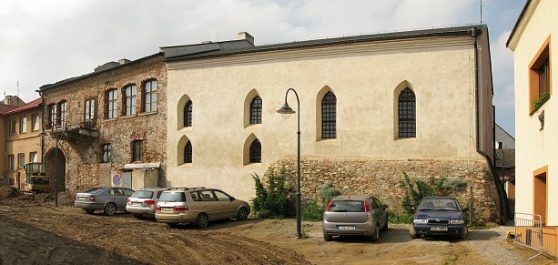
In Polná, the synagogue and rabbi's house reopened today after repairs
 |
The synagogue was secured against moisture during the renovations and received new windows. The repairs in the rabbi's house included new network installations, restoration of the decorative paintings, reconstruction of the windows, and restoration of the entrance to the ritual bath. The costs amounted to approximately 20 million crowns. "In the past, the city already ensured some rescue and restoration work from the regeneration program and from its own funds," said the mayor of Polná, Jindřich Skočdopole, to ČTK. The synagogue and the rabbi's house after the renovations once again form a natural cultural and social center of the Jewish ghetto.
The so-called Hilsner affair, which is the theme of the exhibition in the rabbi's house, remains a current topic. The Polná case sadly marked the year 1899. A young seamstress, Anežka Hrůzová, was murdered in the forest near Polná. Without evidence and based on a strong anti-Semitic campaign, the roaming Jew Leopold Hilsner was accused of the murder. Investigators and judges succumbed to the outbreaks of anti-Semitism, and Leopold Hilsner was sentenced to death, which was subsequently commuted to life imprisonment.
"This exhibition is very important today. People will become familiar with the details of the affair as well as the threat of anti-Semitism," said Petr Papoušek, chairman of the Federation of Jewish Communities. The Israeli ambassador to the Czech Republic, Gary Koren, reminded that small Jewish communities disappeared due to the Holocaust. "This may be the last thing we can do in memory of the former Jewish residents of Polná," Koren said.
The beginnings of the establishment of the Jewish town, which is shaped like a triangle enclosed by two gates, date back to 1680, when a Jewish community settled there due to its advantageous location on the border of Bohemia and Moravia and also thanks to the busy trade route. The Jewish town has experienced several major fires over the centuries, during which all houses burned down and had to be rebuilt. The Polná ghetto, consisting of 32 houses reconstructed in modern style, is now one of the largest and best-preserved in the country.
The Project for the Revitalization of Jewish Monuments in the Czech Republic includes a set of 15 architecturally significant Jewish monuments in ten locations. The total budget for the project reached nearly 280 million crowns.
The English translation is powered by AI tool. Switch to Czech to view the original text source.
0 comments
add comment









